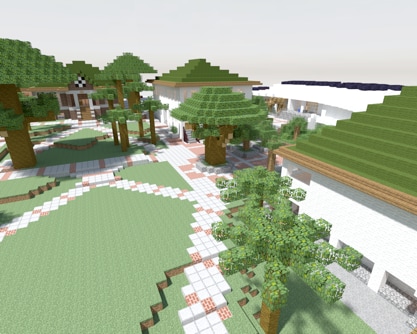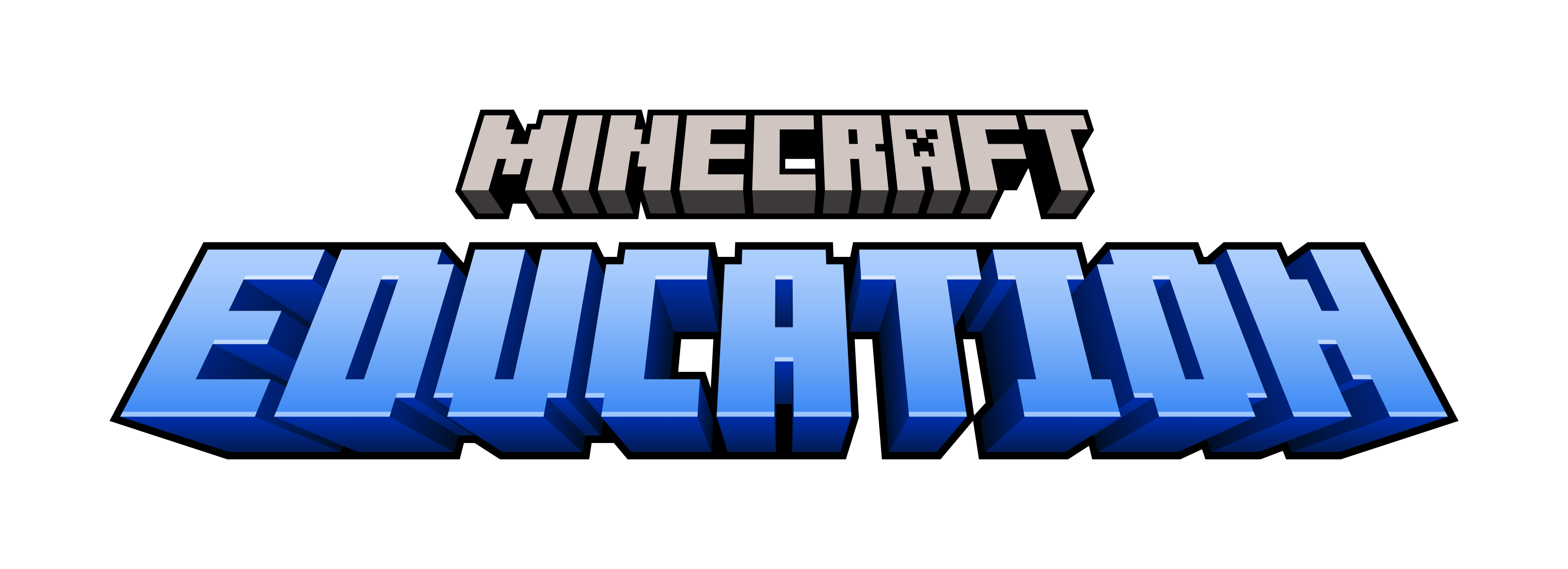Learn to Build, Build to Learn

by Douglas Kiang @dkiang Minecraft: Education Edition is a tremendously popular 3D open sandbox game. It is also a wonderful tool for building in Creative mode, which I use with my students throughout the school year. Here are some examples of building projects, and what students can learn from them. Building to Recreate Something One introductory project I like to assign to students is to build a replica of something that already exists like a famous monument, a school building, or their real house. The goal is to build something as close to the real thing as possible, in the process learning quite a bit about scale, proportion, and ratio.

Some of our students built our school campus in Minecraft’s Creative Mode. They took reference photos, measured the real distances, and then built all of the buildings to scale. When they were finally finished, they said it didn’t “feel right” when they walked through it. They realized that our campus is actually built on a slight incline. When they went back in, added the proper incline, and then restored the buildings, everything looked right. What a wonderful way to open your eyes to something you see every day, but don’t notice! Building as a Form of Creative Expression Just as important as building something from real life, is to assign kids the task of building something that is completely imaginative. Inverted pyramids, a waterfall in your living room, natural light provided by lava pools, anything goes! One of my first assignments when opening up a new world is to ask kids to find a place to build their own house. Some kids who find recreating an existing structure stifling, will find a more creative assignment freeing. For others, it can be challenging to come up with their own imaginative ideas (but good and important practice!) Sometimes arranging a walking tour (or a mine cart tour) to look at a series of “open houses” can get kids talking and sharing about what they have created. Here is a video showing a prototype of the new school learning commons.
A nice literature connection is the classic book “Andrew Henry’s Meadow” by Doris Burn. First published in 1965, it tells the story of a group of children who run away and build their own village in the woods, with each house reflecting the personality and interests of its owner — just like Minecraft! I usually start by sharing this story and then talk about all the different ways individuality can be expressed through outward appearances, then make the connection to physical architecture. Building to Demonstrate Learning Minecraft provides learners with the ability to quickly create three-dimensional structures that can be walked through and explored. This allows learners lots of choice in how to demonstrate their understanding of a new concept. For example, in my AP Computer Science class, I asked kids to use Minecraft to teach or demonstrate a concept. One student created a village that teaches how arrays are used to store data, using chickens and pigs in a series of pens. Another student built a binary calculator. I asked students to create a short video showing their creations in action, and asked them to talk about what the designs are teaching.
In 1981, a young student’s design was selected (http://www.biography.com/news/maya-lin-vietnam-veterans-memorial) from thousands to be the Vietnam Veterans’ Memorial in Washington, D.C. One history class follows that example and challenges each student to build a memorial to World War I, using Minecraft. Each monument must have a central theme and express some aspect of the war and its impact on society. Students then present their designs before a panel and answer questions. This is a much more powerful and effective way of synthesizing the readings and lectures that make up that portion of the course than a simple research paper or essay test. Building to Foster Collaboration Minecraft is also a powerful way to foster collaboration. Every year I issue my students a challenge that is too difficult for any one student to accomplish. One year, I challenged them to build me a great office underwater. They succeeded spectacularly, and so with the following year’s kids, I had to come up with an equivalent challenge that was equally massive, but not the same. So, I had them build me a massive doughnut-shaped swimming pool that was fully above ground. In both cases, students had to plan the size of the structure, and decide how they were going to come up with the materials (for these challenges, we were actually building in Survival mode, which has limited resources.) They had to figure out the relationship between the surface area of a dome and its diameter, as well as how the height of the dome affects the area it encloses. There were all sorts of powerful opportunities for mathematics learning, as well as some great lessons in how to communicate and collaborate as a team. No question about it, building is powerful learning. Seymour Papert, inventor of the Logo language, coined the term “contructionism” to express the idea that we can learn very effectively through building and play, especially when these activities occur in a social context. This same principle is also embraced by the maker movement, which emphasizes the importance of being able to quickly build prototypes or whatever you can imagine, then rebuild and iterate until you are happy. In fact, Minecraft is the ultimate makerspace, and it’s one that every student can experiment, play, and build with, all in the service of powerful and meaningful learning. Douglas Kiang is a Minecraft Global Mentor with over 25 years of teaching experience at all grade levels. He currently teaches computer science at Punahou School in Honolulu, Hawaii. He holds an Ed.M. in Technology, Innovation, and Education from Harvard.


